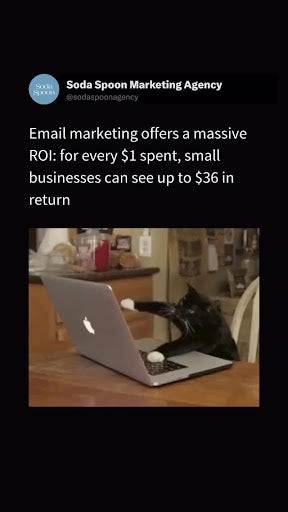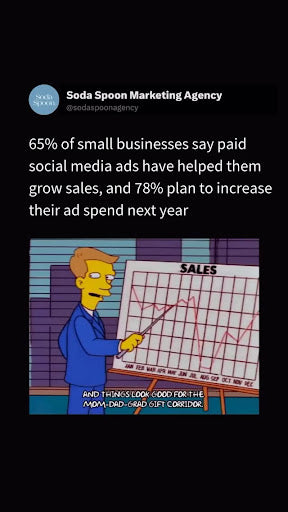Key Elements of an Irresistible Splash Page
Splash pages serve various purposes, but their primary benefits include: - Featured in Landing pages - Today’s splash pages are elevated. A killer splash page has gotta: - The monochromatic design is uncluttered, but the material on the splash page varies. Sometimes it’s just the quote, while other times an ad is displayed or other articles are promoted in list form (both of which work toward brand initiatives of driving up overall site clicks). - As you’ll see, splash pages come in many shapes and sizes. We’ve tracked down some truly standout examples so you can see how versatile a splash page can be and get your ideas flowing. Keep in mind that splash pages can be more commonly found in industries like hospitality, ecommerce, and SaaS, but can be leveraged across almost any industry with a bit of creative thinking.
Now let’s talk about actually pulling together your A+ splash page. Splash pages have a relatively small canvas, meaning you need to make the most of your space. Here are a few suggestions to help you be more efficient when you create your splash page: 1. Make sure your headline is catchy and relevant.
-
Visual content is one of the most powerful tools that you can use in your marketing arsenal. By including high-quality images and videos on your landing page, you can engage and convert more visitors into customers. Not only does this improve overall branding, but it also increases site speed and decreases load times. Additionally, visual content is often more engaging than text-only pages.
-
Use Visual Content.
-
Your headline is the first thing your visitors will see, so it’s important to make sure it’s catchy and relevant. The headline should be concise and persuasive, and it should explain what the page is about and why the visitor should care.
-
This is where the fun begins — designing your hero section.
-
So, if we're moving past splash pages, what's the next step for making a solid first impression online? The answer’s quite simple.
-
Think about how every visual asset works together: From headings and font to white space, each visual element should work in harmony to create a sleek, user-friendly feel.
-
Use contrast to highlight your goal: Keep important visual elements highlighted. For example, you could put a thick dark border around your sign-up form that has a white background.
-
Simplicity is key: Many brands see higher conversions when they remove unnecessary design elements, so keep white space prominent so that the important design elements — like a headline, hero image, and CTA — stand out.
Design Best Practices
When it comes to creating irresistible landing pages, there are several key design best practices to keep in mind. Here are some valuable insights gathered from various sources:.
-
It's essential to use a graphic design tool like Adobe Photoshop or Canva to create a visually appealing layout that matches your brand's colors and fonts.
-
Make sure your landing page design is mobile-friendly to cater to users accessing your site from different devices.
-
Seek feedback from others to ensure your design is not just based on personal preference but on a combination of art and science.
-
Choose a theme that allows you to achieve the desired look through a simple and user-friendly interface.
-
Consider ditching splash pages and focus on creating clear messaging, a genuine value proposition, and easy navigation to enhance user experience.
-
Maintain consistency in design across all brand assets to build trust and convey your brand's personality effectively.
By incorporating these design best practices, you can create landing pages that not only look visually appealing but also effectively drive user engagement and conversions.
Past Error in Output: An error to avoid in the future
Optimizing Performance
When it comes to achieving maximum ROI and scaling marketing initiatives, Instapage emerges as the ideal solution for various specialists in marketing, advertising, education, and finance. This platform caters to small teams with a cost-effective and user-friendly approach, allowing users to design, monitor, and optimize projects at any stage for immediate effects.
A strong online presence is crucial for converting visitors into customers. Instapage offers an all-in-one platform for creating professional and highly optimized landing pages to attract and persuade different audiences effectively.
For fast page performance improvement, an AI-powered experimentation tool by Instapage tracks ongoing experiments and directs traffic to the top-performing page variations, ensuring faster optimization insights without compromising quality.
Splash pages, designed to capture attention with bold announcements or promos, may have their perks but can potentially interrupt the smooth user experience expected today. Users prioritize speed and ease of access to content, making the decision to use splash pages a critical one for website owners.
To fine-tune landing pages for maximum conversions, implementing effective optimization strategies is key. Visual content, such as high-quality images and videos, plays a significant role in engaging and converting visitors into customers while enhancing branding and improving site speed.
Optimizing performance involves leveraging tools like Instapage, understanding the impact of splash pages on user experience, and implementing strategies that prioritize user engagement and conversion rates.
Call-to-Action Strategies
Calls to action (or “CTAs”) are the text and button on your landing pages that readers can click to further engage with your brand. A CTA should be clear, well-written, value-focused, interesting, testable, and quick to prompt visitor engagement. Deliver on the headline’s promise: The CTA should encourage readers to click, sign up, download, or register. Use contrast to highlight your goal: Keep important visual elements highlighted. For example, you could put a thick dark border around your sign-up form that has a white background.
- Boost engagement through quizzes.
- A/B testing for landing pages.
- Ultimately, ditching the splash page isn't just about following the latest design trends. It's a strategic move. Removing this barrier can make your site more welcoming and accessible, ensuring that visitors can get straight to what they came for without any extra clicks or waiting around. For businesses looking to stay competitive in 2024, streamlining the path to your content isn't just a nice-to-have—it’s a must. Forward-thinking businesses need to prioritize user experiences that are fast, seamless, and laser-focused on driving conversions from the moment someone lands on their site.
Campaign Strategy
When you navigate to IKEA’s website, you get a friendly greeting and the opportunity to choose which site you’d like to view based on your location. Although this is less common now with advancements in location services, it’s still a best practice to ensure an optimal user experience (especially for global companies like Ikea or Tesla). The function it serves is immediately apparent, reducing the time it takes for visitors to get to the good stuff in their region (like that sweet Hemnes bookshelf that’s on sale).
- Craft Your CTA. CTAs (or call-to-action buttons) are one of the most important elements on your landing pages. By incorporating effective CTA buttons, you can drive more traffic to your website and convert those visitors into customers faster than ever before. CTAs should be easy to understand and simple to use so that even first-time visitors will be able to convert without difficulty. Use Visual Content.
Make sure your CTA is clear and easy to spot. Your headline is the first thing your visitors will see, so it’s important to make sure it’s catchy and relevant. The headline should be concise and persuasive, and it should explain what the page is about and why the visitor should care.
How to Make A Splash Page Website
A splash page is a web page that is displayed temporarily when someone first visits a website. It often includes a logo, a message, and a call to action (such as 'Enter Site' or 'Learn More'). Here are the general steps to create a splash page for a website:.
-
A splash page, also known as a landing page, is a web page that serves as the entry point to a website. It's usually a simple, visually striking page that is designed to grab visitors' attention and direct them to other pages on the site. Creating a splash page is relatively easy and can be done using a variety of tools and platforms. Here are some steps to help you create a splash page for your website:.
-
If you are building it by hand and you want to host it yourself, the best part is you can do that absolutely for FREE if you already have a computer.
-
Creating a splash page for your website can help you capture visitors' attention and direct them to other pages on your site. By defining your goals and target audience, choosing a template or design, creating your content, adding a call-to-action, optimizing for mobile devices, and testing and refining your splash page, you can create a more effective entry point to your website.
If you’re brand new to online business, or business in general, chances are you don’t yet have a logo or a color palette. While you can get more 'official' in the future, the goal here is to be as quick as possible. You will want to select a temporary color palette to use for your splash page website; if you want to change it in the future, you can.
So let’s talk about the practical steps now for how to launch a splash page website.
-
WordPress can be installed in one of two ways: manually and through an install script.
-
Because you’ve probably skimped on a decent web hosting plan. You probably have tried to find the cheapest hosting plan available and are paying something like $4 a month to share a server with 998 other websites. If your site launched to thousands of visitors, your host would be crippled, providing slow load times and driving people away by the hundreds.
-
WP is a professional solution. You will be able to find cheaper hosting and though cheap hosting can sometimes work out, our approach is that a professional website deserves professional hosting to produce a professional experience.
-
Most web providers, including WPEngine which installs WordPress for you on the moment of account creation, will have script installers that allow you to install WordPress on your server with one click. This is going to be the preferred method of installation for most people.
-
Adobe provides one of the best color resources on the web appropriately titled Adobe Color CC. You can easily create a palette of complimentary colors based upon a single color you have a taste for, or you can use their explore tab to search thousands of palettes that others have created and uploaded to Adobe.
-
At the time of this writing, Shrein Media exclusively uses the Enfold Theme by Kriesi to implement every online business strategy we draft for our clients. You can use any theme you want but for a splash page website to be an option you want a theme that offers you the ability to hide sidebars, main navigation, footers, leaving only the main body content. Using the Enfold Theme, you can select a template that does this very thing.
-
If you’re ready to give a go at creating your own splash page website using WordPress, here are the very basic steps for you to follow in order to publish your splash page website this week.
-
There is a lot you can do for a splash page. The bottom line is that you want your splash page website to be simple, communicative, and reflective of your business or brand.
-
The ONLY downside is that typically web hosts will have deals with other businesses and when you install WordPress, a few plugins may install as well. For instance, one provider I was using was installing Mojo Themes with every new WordPress plugin. This is very similar to buying a new PC and upon starting for the first time there is a ton of 'bloatware' installed that you never wanted in the first place.
-
In the past, you might have tried to go the ‘free route’ but now that you’re serious about expanding your income sources to the internet you do not want to use a free theme. Free themes will typically put your site at security risk, are not well maintained, not often updated, and you will not find any support when you get stuck.
-
First and foremost, you need to pick your website builder. What builder are you going to use? Here are a few options:.
-
If you have not yet secured web hosting, that is where you will want to start. I have put together a post here on my personal website that will help you navigate selecting a host that suits you.
-
One other website that does a similar function to Adobe Color CC is Coolors.co. It’s a very straightforward color palette service that allows you to select a combination of five colors. It’s worth a look.
Your splash page should be built to enhance your audience’s experience on your website, not hinder it.
Ecommerce
Regardless of which option you pick, make sure your hero section includes the following:.
- Create your WordPress website
And you’ll see that in these next steps:.
You have two options:.
Depending on your conversion goal, your splash page design and setup will vary, but the best splash pages consider the following best practices:.
To avoid SEO issues caused by splash pages, we recommend the following:.
-
Simplicity is key: Many brands see higher conversions when they remove unnecessary design elements, so keep white space prominent so that the important design elements – like a headline, hero image, and CTA – stand out.
-
Select your images wisely: Use imagery that’s evocative and unique to both your brand and the goal of the campaign. Don’t just use any stock image. Select a sleek product photo or someone using your product or service.
Conclusion:
Creating an irresistible splash page for your website is crucial in capturing visitors' attention and driving engagement. By incorporating captivating visuals, compelling copy, and a clear call-to-action, you can effectively convert visitors into customers. To take your website to the next level and maximize your advertising strategies, consider partnering with a full-service agency like Soda Spoon. With their expertise in crafting unique advertising strategies and focus on data-driven decision-making, Soda Spoon can help your business achieve higher returns on ad spend and increased revenue. Elevate your online presence today by visiting. Soda Spoon's website And exploring the tailored advertising solutions they offer.




